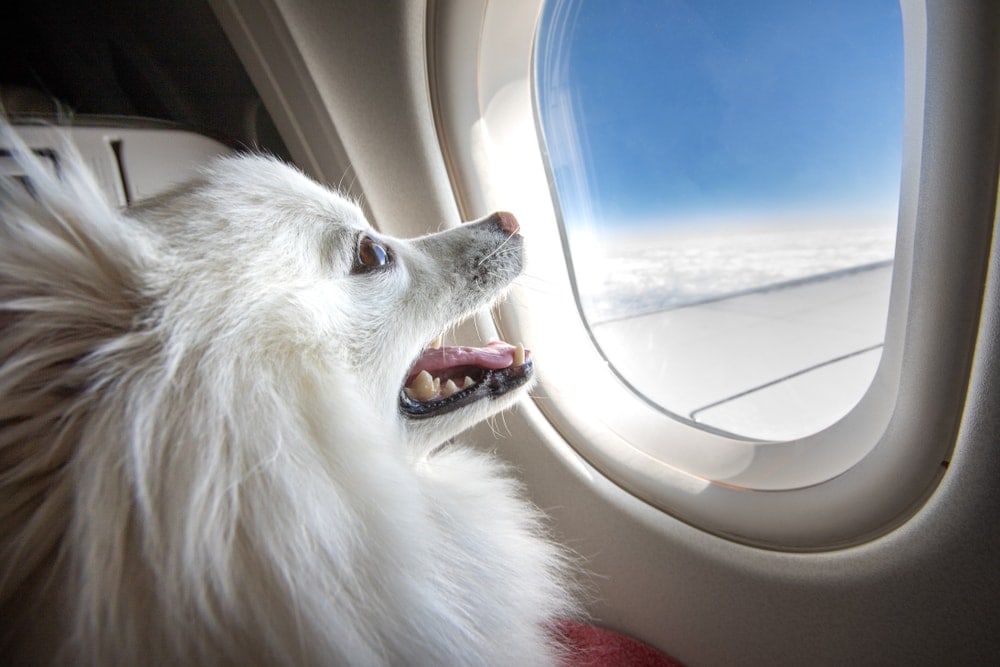10 Best Mobility Service Dog Breeds (With Pictures & Descriptions)
By Adam Mann
Updated on
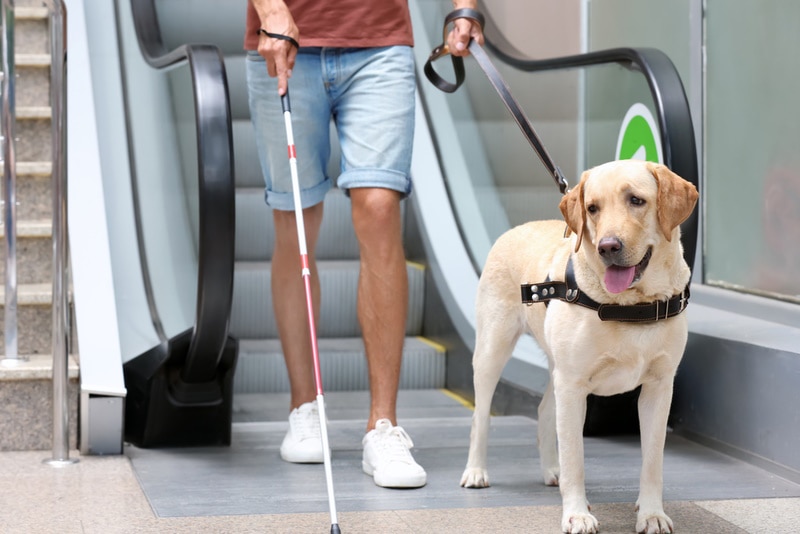
If you need a little help getting around a service dog can be a great choice. But just because you need a service dog doesn’t mean you want to get just any service dog. Some breeds do better than others when helping with mobility, and we’ve highlighted 10 of the best mobility service dog breeds for you to consider down below
The 10 Best Mobility Service Dog Breeds
1. Labrador Retriever
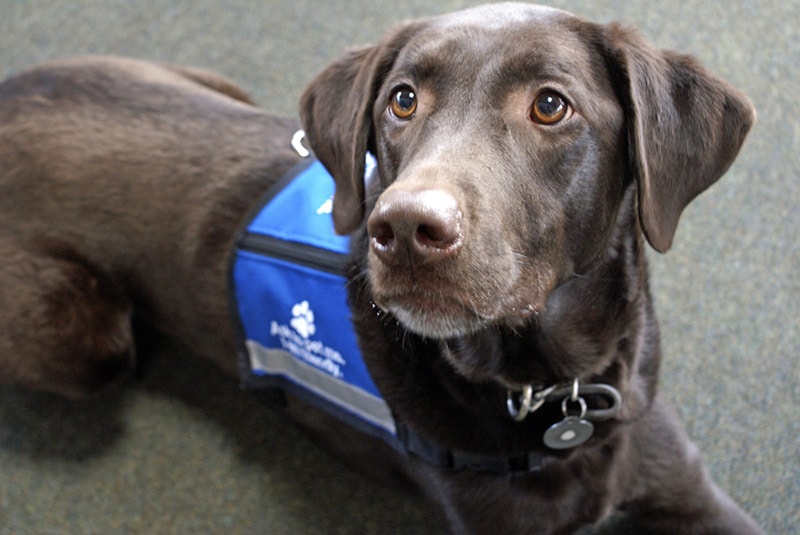
| Height: | 22 to 24 inches |
| Weight: | 55 to 80 pounds |
| Lifespan: | 10 to 12 years |
Labrador Retrievers are among the most loyal and eager-to-please dog breeds in the world, so it’s no surprise that they make outstanding mobility service dogs. However, if you get a smaller Labrador Retriever you might run into problems if a larger person needs a mobility dog.
But a Labrador Retriever on the larger side of things shouldn’t have any issues unless the person is much larger. Another perk of getting a Labrador Retriever mobility service dog is that they have a longer lifespan than many other large service dogs, which gives you the mobility you need for years to come!
2. Golden Retriever
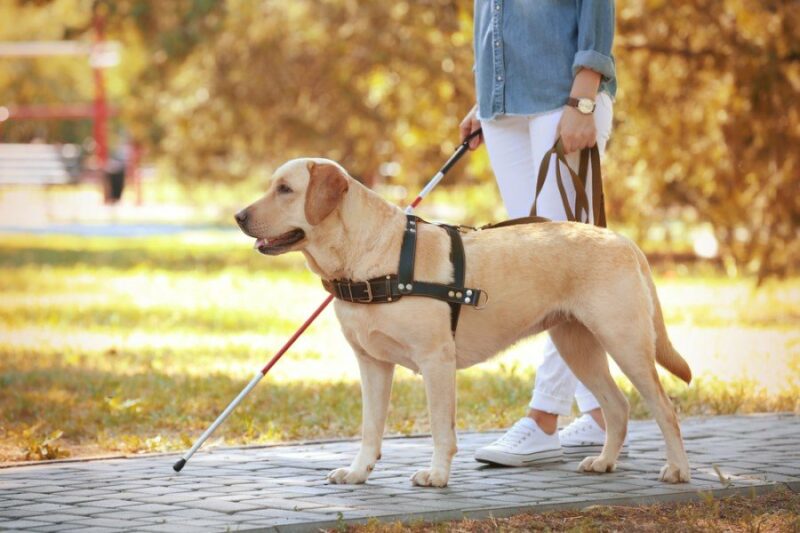
| Height: | 20 to 24 inches |
| Weight: | 55 to 75 pounds |
| Lifespan: | 10 to 12 years |
The Golden Retriever is another outstanding service dog choice. They’re incredibly loyal, eager to please, and have plenty of energy that helps them out as mobility service dogs. They have some of the same size concerns that come with a German Shepherd, but if you get a larger Golden Retriever, they can usually handle the task at hand.
And just like a Labrador Retriever, the Golden Retriever has a longer average lifespan than many other larger service dogs.
3. Newfoundland
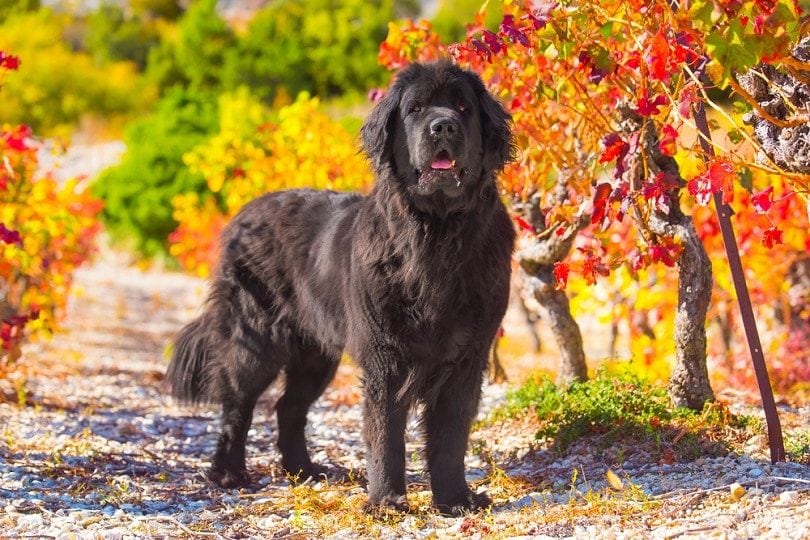
| Height: | 25 to 28 inches |
| Weight: | 100 to 150 pounds |
| Lifespan: | 8 to 10 years |
If you need a larger mobility service dog, the Newfoundland is an excellent choice. Their larger size gives them the necessary strength to help people of all sizes, and their loving demeanor makes them great companions too!
Just keep in mind that their long coats require a bit more maintenance which sometimes can be problematic, and they don’t live quite as long as some other large service dogs.
4. Standard Poodle
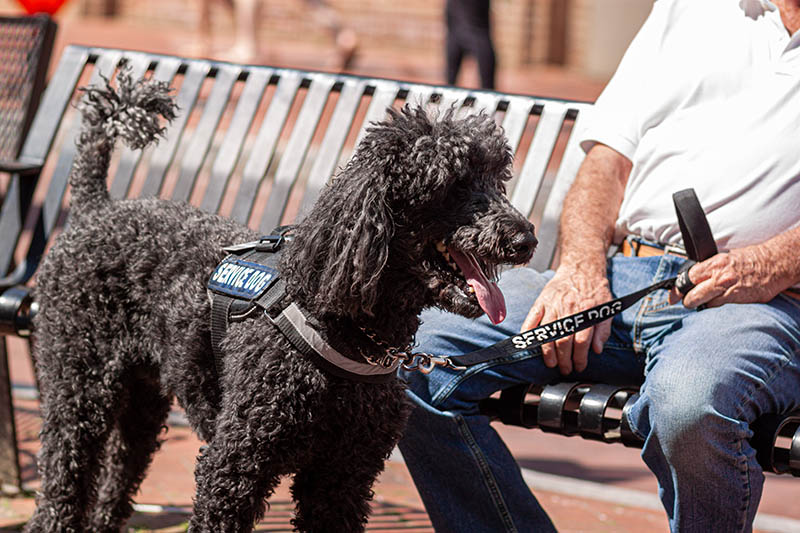
| Height: | 18 to 24 inches |
| Weight: | 45 to 70 pounds |
| Lifespan: | 12 to 15 years |
As one of the most intelligent dog breeds on the planet, there’s not much you can’t train a Poodle to do. But if you need a mobility service dog, the standard-sized Poodle is the way to go. They’re larger than other Poodles, which gives them the necessary strength for the job.
But even with a Standard Poodle, you need to keep an eye on their size, as some Standard Poodles only weigh about 45 pounds. That’s large enough for some kids and smaller people, but it’s too small for many adults.
Still, with an average lifespan that can reach 15 years, a Standard Poodle is one of the longest-living service dog options, especially considering their larger size.
5. German Shepherd

| Height: | 22 to 26 inches |
| Weight: | 50 to 90 pounds |
| Lifespan: | 9 to 13 years |
If you look up pictures of working dogs, it doesn’t take long until you see a picture of a German Shepherd. These intelligent and loyal dogs thrive with a task at hand, making them a great choice as a mobility service dog.
Their size range varies, but if you get a larger German Shepherd, they’re strong enough to assist with just about any size person. Finally, one of the best perks of a German Shepherd mobility dog is their ability to complete a wide array of tasks, including mobility.
6. Bernese Mountain Dog
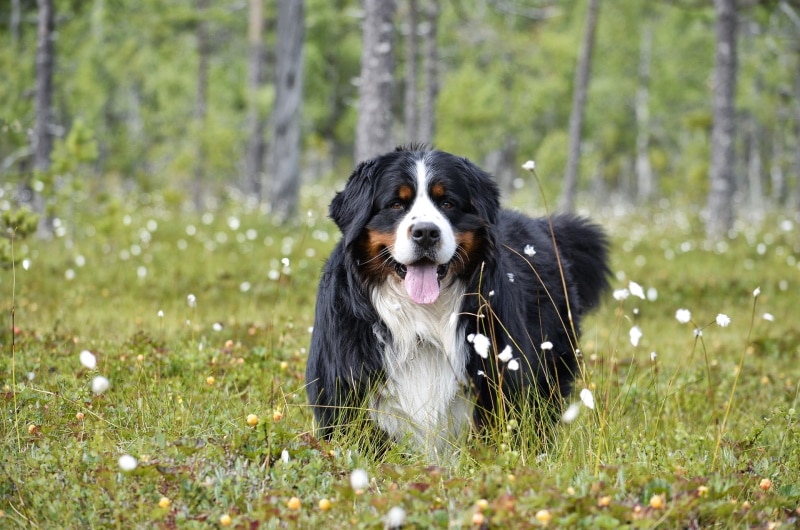
| Height: | 23 to 28 inches |
| Weight: | 80 to 110 pounds |
| Lifespan: | 6 to 8 years |
The Bernese Mountain Dog is a phenomenal service dog option, and because of their larger size, they can help just about anyone with mobility issues. However, while there’s no denying how sweet, loyal, and useful they are, the Bernese Mountain Dog does come with two notable drawbacks.
The most significant issue is their shorter average lifespan. The Bernese Mountain Dog is prone to a wide array of health conditions, and it’s why the average lifespan of these dogs has dropped from about 12 years to just 8 years.
Moreover, while the Bernese Mountain Dog has a beautiful coat, it also takes a bit more work to keep up with. It’s not a dealbreaker for everyone, but it is something you’ll need to consider.
7. Rottweiler
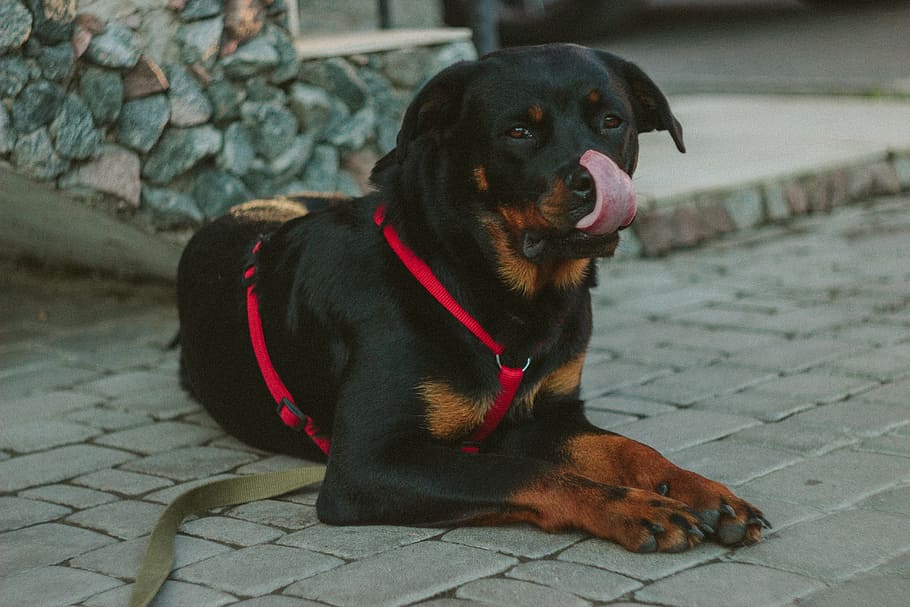
| Height: | 22 to 27 inches |
| Weight: | 75 to 130 pounds |
| Lifespan: | 8 to 10 years |
The Rottweiler might not seem like the perfect mobility service dog at first, but the more you look into them, the more you’ll realize how great they are for the position. They’re incredibly loyal and loving, and despite their territorial history, with proper socialization, it isn’t a problem.
And since you’re getting a Rottweiler service dog through a training agency, they shouldn’t have any behavioral concerns you need to worry about. But keep in mind that some people might be warier around a Rottweiler service animal than they would be with another breed.
8. St. Bernard
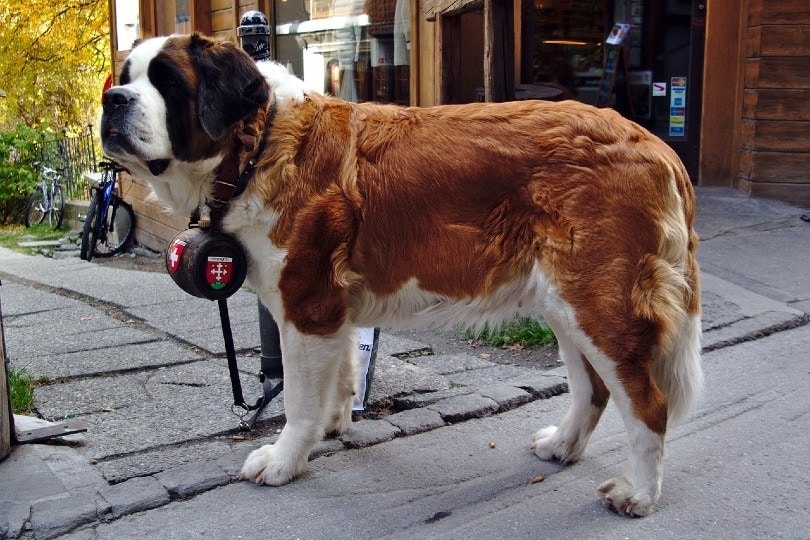
| Height: | 26 to 35 inches |
| Weight: | 120 to 180 pounds |
| Lifespan: | 8 to 10 years |
The St. Bernard is another large dog breed that can be an excellent mobility service dog. These dogs originally helped people through the mountains of Switzerland, so they’re well suited to help people throughout their daily lives too!
Like many large dog breeds, they have a shorter lifespan that you’ll need to factor in, but if you need the larger size to help you get around, they’re an outstanding choice. Plus, they make great companions!
9. Mastiff
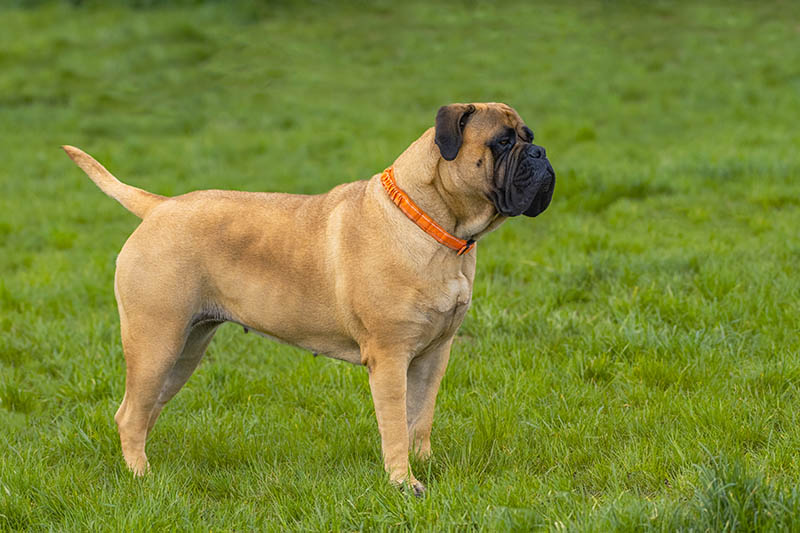
| Height: | 28 to 36 inches |
| Weight: | 160 to 230 pounds |
| Lifespan: | 6 to 12 years |
If you need a large mobility service animal, a Mastiff can make a great choice. There’s quite a range of sizes when selecting a Mastiff, but with the smaller end coming in at 160 pounds there’s not a “small” Mastiff out there.
But since these pups can reach up to 230 pounds, some are certainly smaller than others! While larger dogs can help with larger people, the larger the pup you get, the shorter their average lifespan. If you get a 230-pound Mastiff, it’s not uncommon for them to only live about 6 to 8 years. Meanwhile, some smaller Mastiffs can live about 12 years.
10. Great Dane
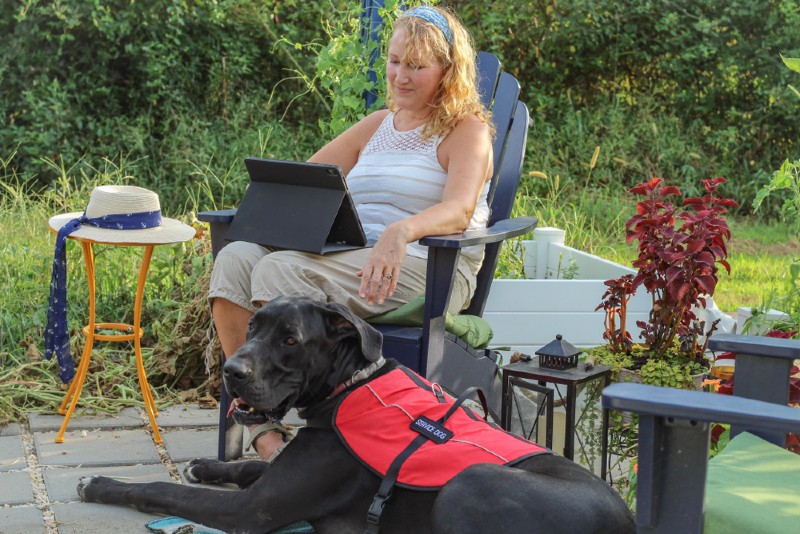
| Height: | 28 to 35 inches |
| Weight: | 100 to 200 pounds |
| Lifespan: | 8 to 10 years |
The Great Dane is one of the largest dogs on the planet, so if you need a service dog that can handle a larger person, the Great Dane might be an outstanding choice. Not only are they heavy enough to help with larger people, but their larger height opens them up to unique opportunities that you can’t get with many other breeds.
It’s not the first breed that comes to mind with a service animal, but they do make a great choice. Just keep in mind that Great Danes tend to have a slightly shorter average lifespan compared to many other dogs.
Conclusion
Whenever you’re purchasing a service dog, ensure you do your homework and only get a service dog from a registered agency. They should be able to walk you through everything you need to know about their dogs, and they’ll help pair you with a service dog that can meet all of your needs!
Featured Image Credit: Africa Studio, Shutterstock


